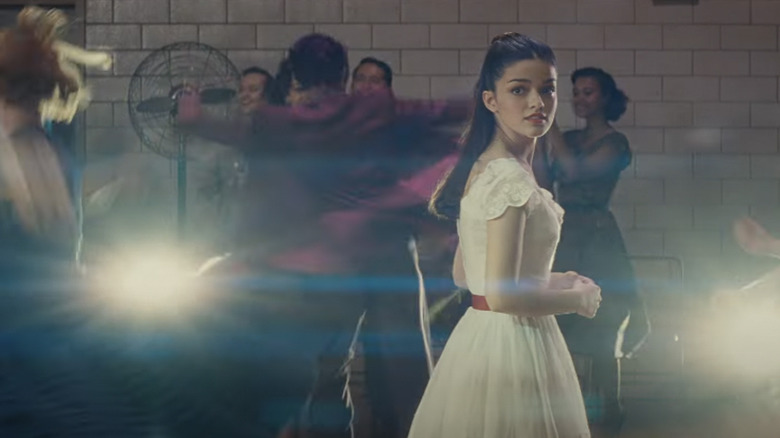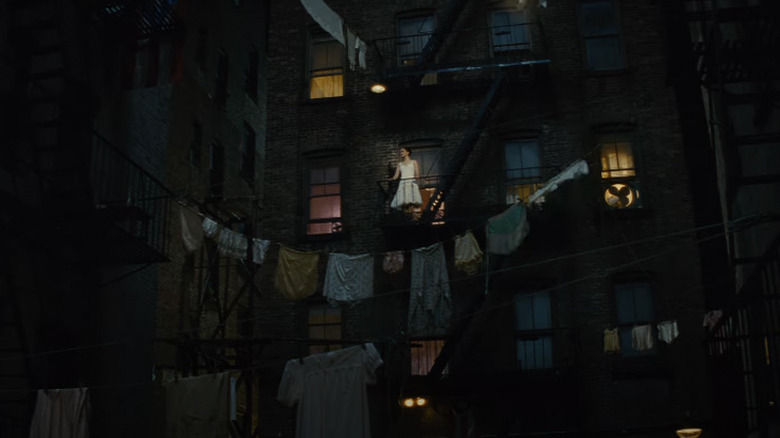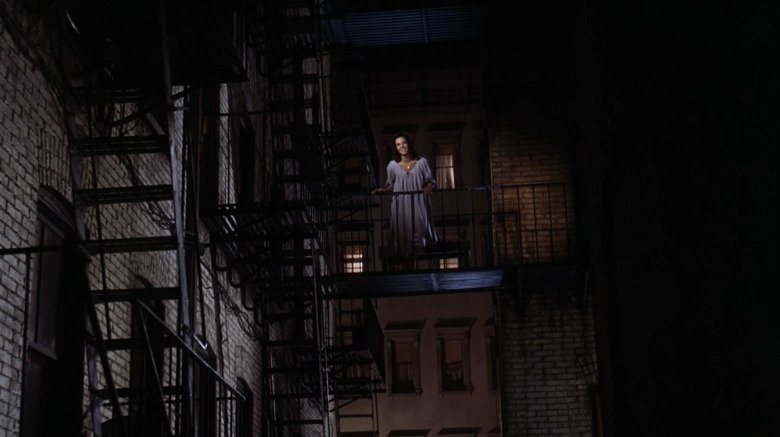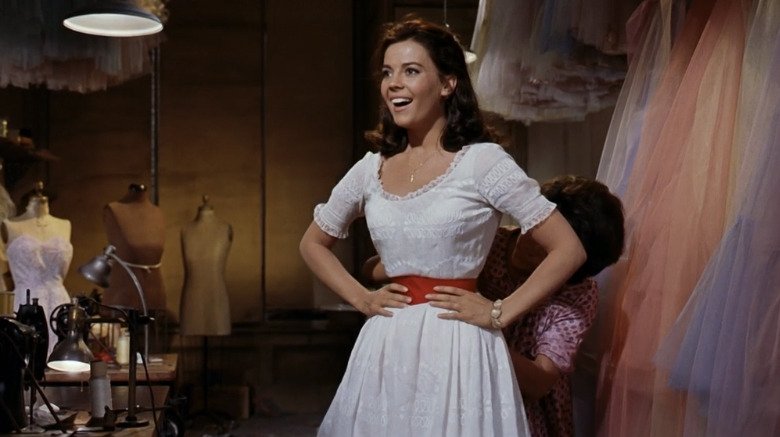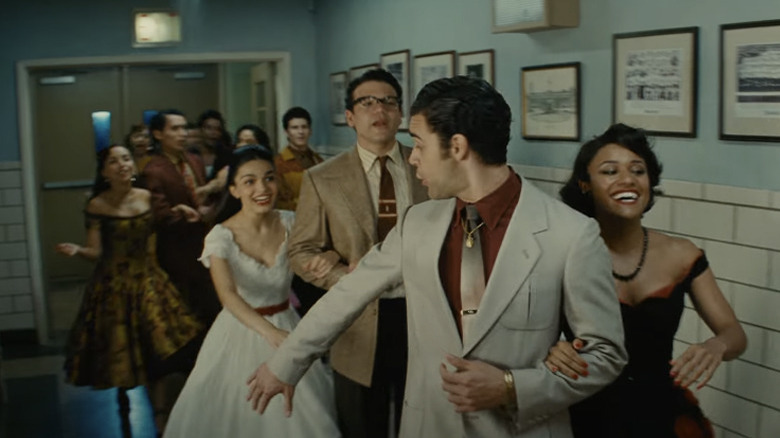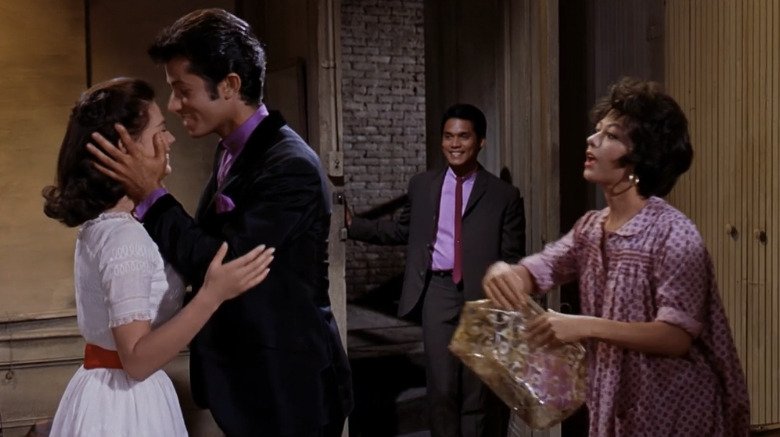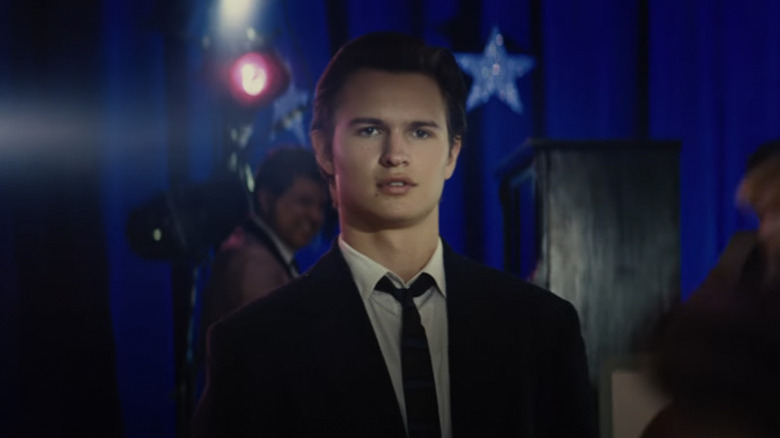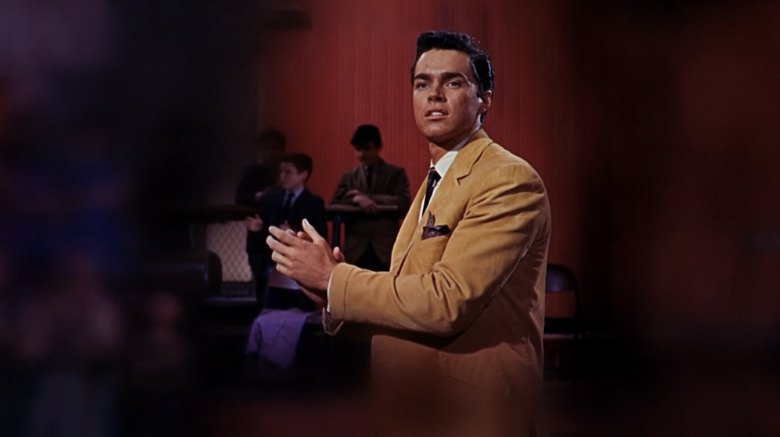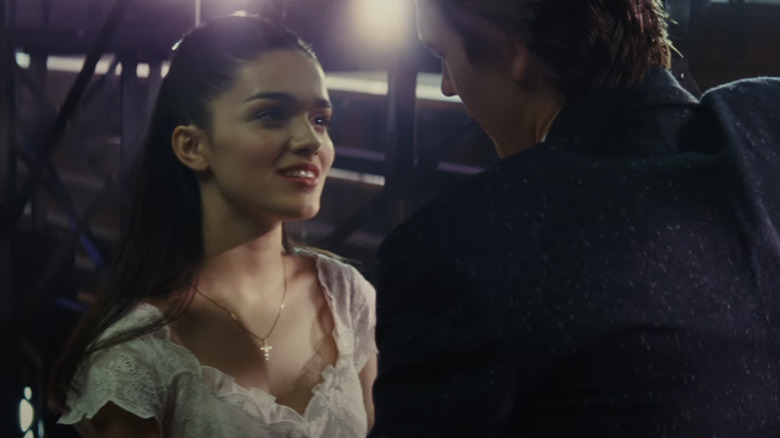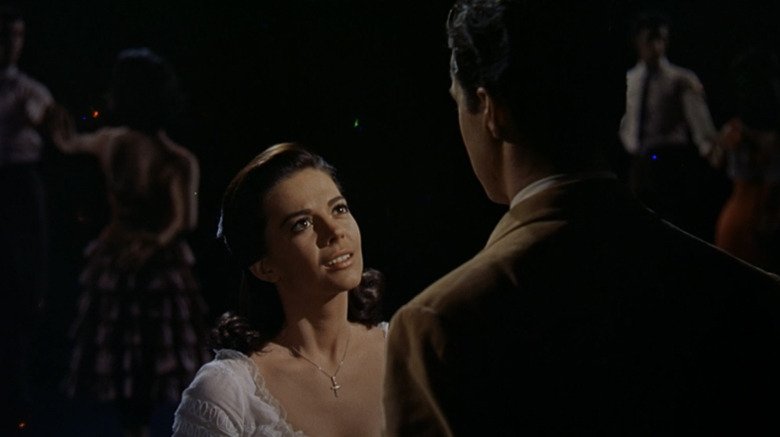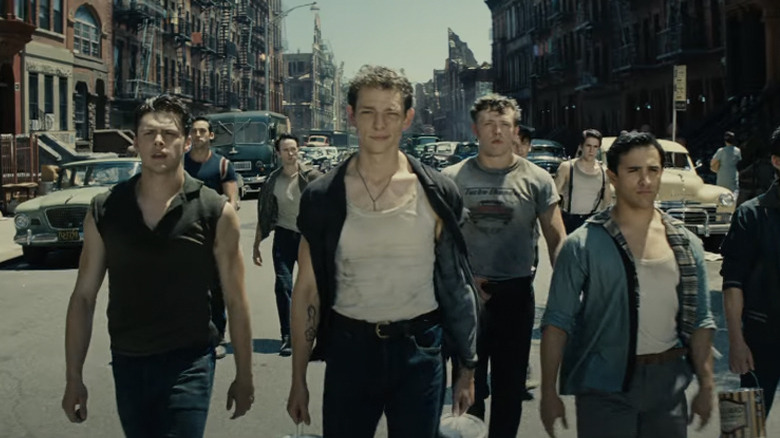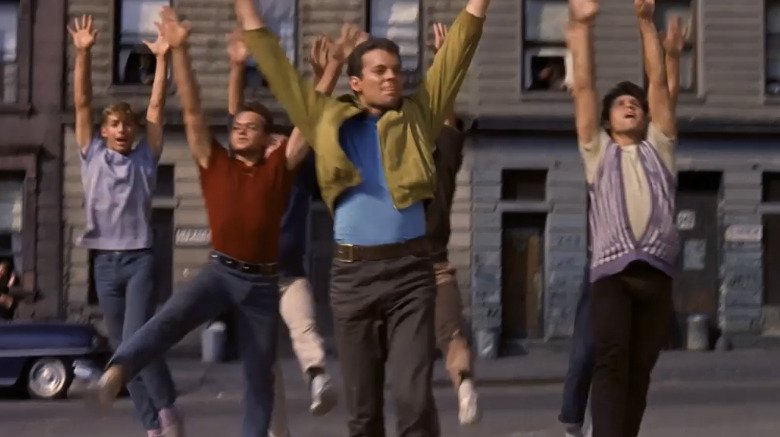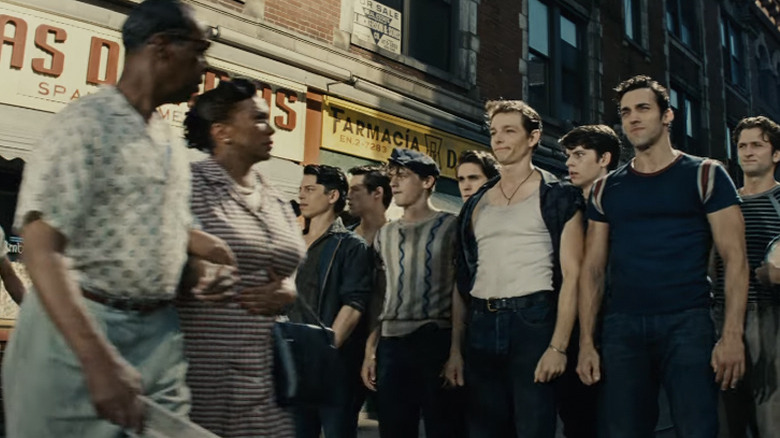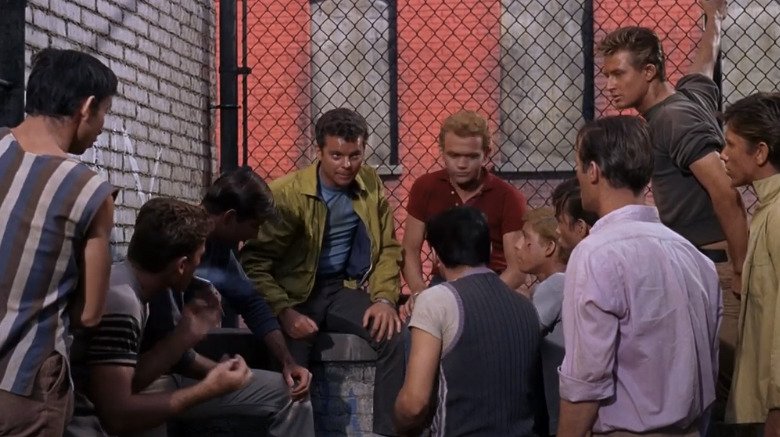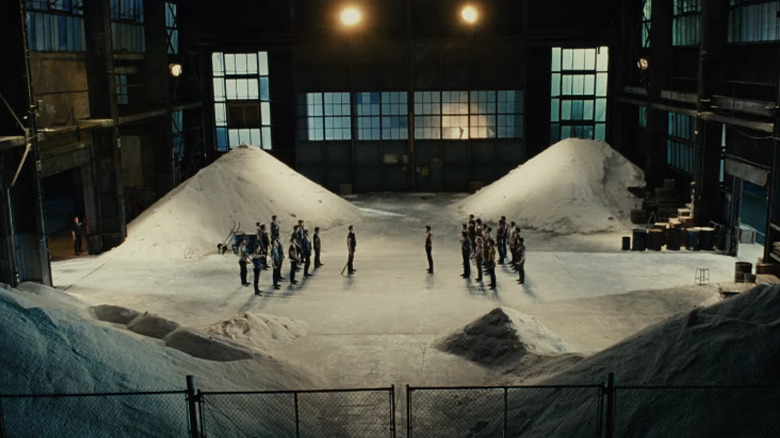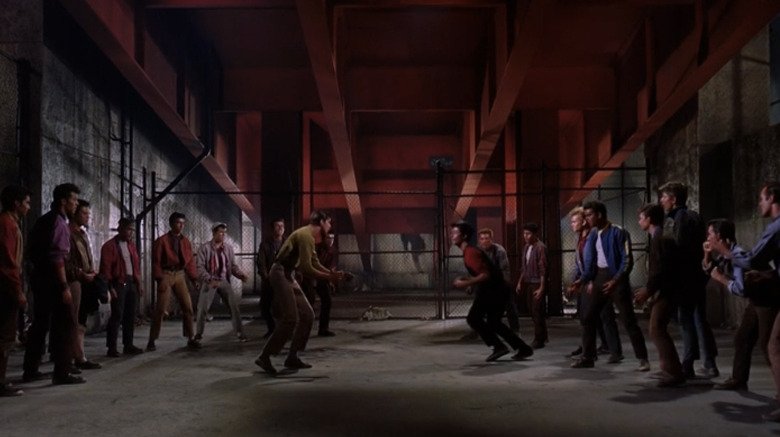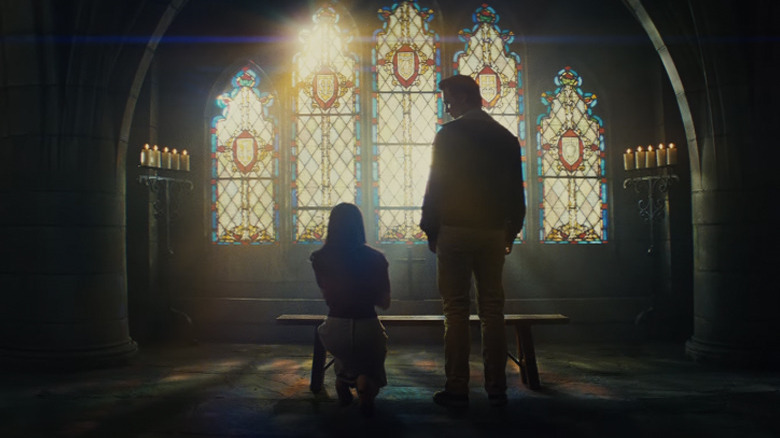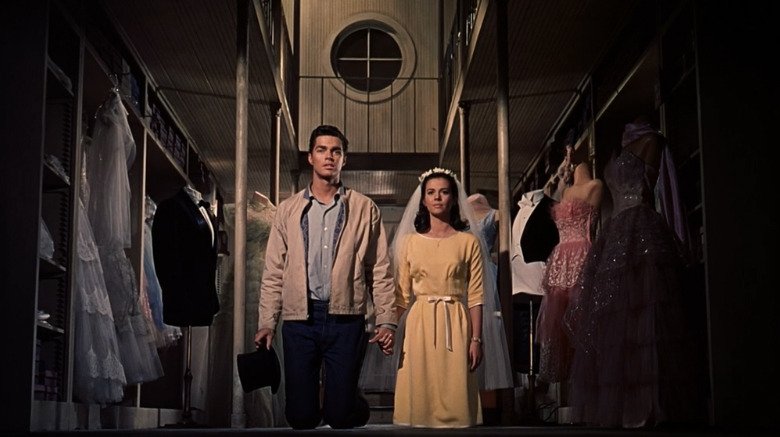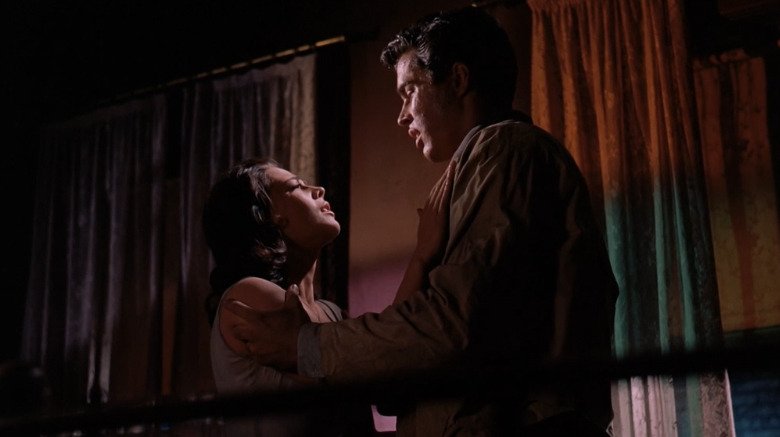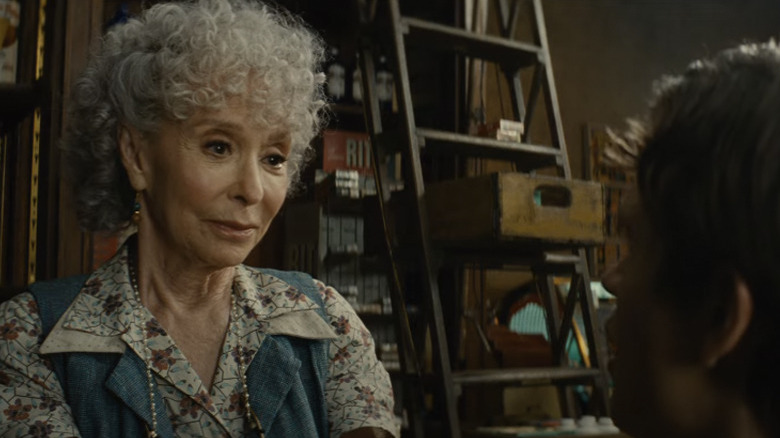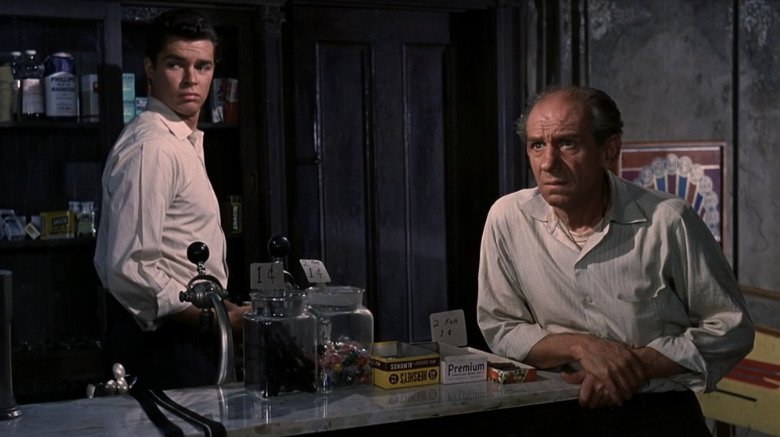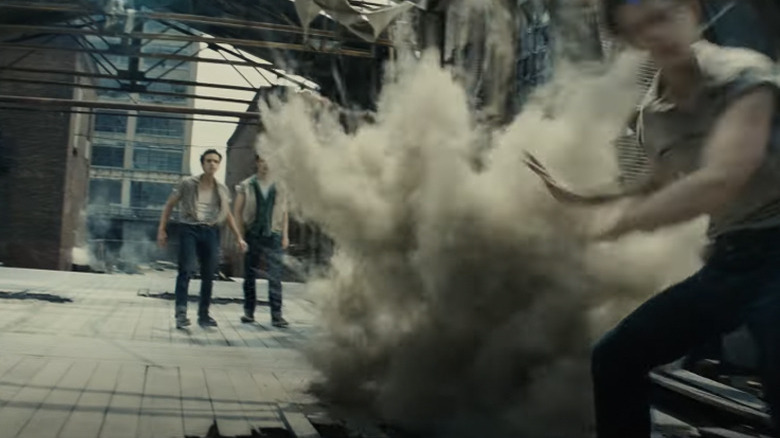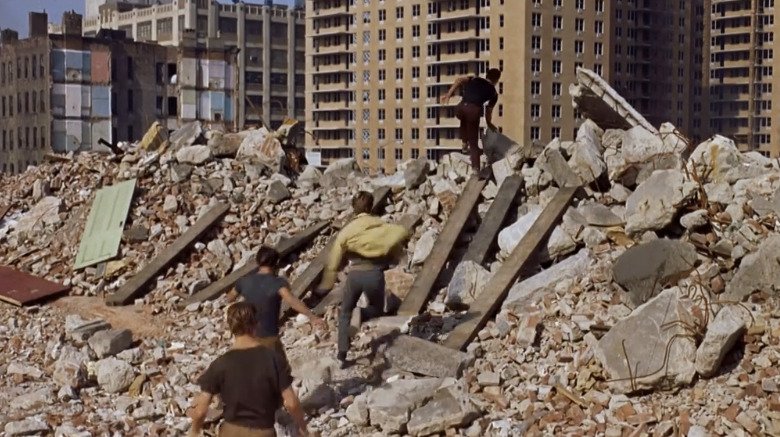West Side Story Trailer Breakdown: See How Spielberg's Remake Compares To The Original
Steven Spielberg, arguably the greatest filmmaker alive today, is taking on a fascinating challenge for his next project: he's remaking a classic. A new trailer for his version of "West Side Story" dropped this morning, so let's take a closer look and compare and contrast some of Spielberg's choices with those of director Robert Wise, who helmed the original 1961 movie.
Maria's Apartment
From the first shots of the trailer, you can see some of the aesthetic changes Spielberg and production designer Adam Stockhausen made to the exterior of Maria's (Rachel Zegler) apartment building. Here's how the exterior looked in the original film:
While Robert Wise's movie is known for its incredibly vibrant color palette, this particular location was somewhat muted. Spielberg's mixes in pastel pinks and yellows, adding a warmth that the original does not have in this scene. Notice how the light in the windows and the framing of that clothesline almost forms a smiling face emblazoned on the wall. The way the trailer is cut would have us believe that she's singing "Tonight, Tonight" opposite her new love interest at this moment, but that might be a deceptive piece of editing. So that smiling clothesline could either be reflecting Maria's inner happiness or mocking her, depending on the point in the film when this shot arrives.
Maria's Dress
This is Anita, played by Ariana DeBose. She is friends with Maria and the girlfriend of Maria's hot-headed brother, Bernardo (David Alvarez), who is the leader of a Puerto Rican street gang called the Sharks. The opening moments of this trailer explain that this is Maria's first time in New York City. "I want to be happy here," she says. "I want to make a life, a home." In the original film, Maria works with Anita sewing fabric in a clothing store, and Maria complains about having been in New York for a month without having had any adventures in the city. For her first adventure, she attends a dance — one that will change her life forever. But we'll get to that in a minute. Take a look at this scene in the '61 version:
That version places this scene in the sewing shop instead of the apartment, so it's possible that Maria does not work alongside Anita in the 2021 film. Maria hates the idea of wearing this white dress in the original movie, but comes around to it once Anita helps her put it on and she sees her reflection in the mirror. This dance is extraordinarily important for Maria: she views it as "the real beginning of [her] life as a lady in America."
Pre-Dance
In this shot, Bernardo and Anita lead the Jets and their dates through the kitchen into the dance hall. Maria is attending with Chino (Josh Andrés Rivera), who is being poised as a potential match for her. "Tonight is about family," Bernardo says. Note the muted colors of the Sharks' suits in the new version compared with the pop of the original.
In the classic version, Maria does not feel any romantic spark when she looks at Chino — probably because he's a bit of a nerd. (When he and Bernardo go to pick up the girls before the dance, he hovers in the doorway; when they tell him he can come in, he replies, "But this is a shop for ladies!" as if he's incapable of stepping across the threshold.)
Spielberg's shot bursts through a door and opens up into the dance hall, while Wise's version used a kaleidoscopic transition from Maria spinning in the sewing shop to blobs of color that eventually became dancers inside the hall.
Meet Tony
At the dance, Maria locks eyes across the room with a white guy named Tony (Ansel Elgort). He's the co-founder of the Jets and former leader of that gang (big rivals of the Sharks). He's still pals with his former gang members, especially its new leader, Riff, but Tony is now largely out of gang life and trying to be a respectable citizen by working at a local drug store.
The dance sequence is one of the most visually dazzling scenes in Wise's original movie. As Tony and Maria make eye contact, the world around them drops out of focus to such a degree that the scene borders on a dream sequence as the two have their first dance and first conversation on the floor.
"You're Not Puerto Rican"
Spielberg's film sees Maria and Tony chatting behind the bleachers in the gymnasium. "I've never seen you before," Maria says. "You're not Puerto Rican."
"Is that OK?" Tony asks.
In the original movie, Maria doesn't mention Tony's race at that moment. In fact, after Maria and Tony kiss on the dance floor and Bernardo rips her away, he snarls, "Couldn't you see he's one of them?" and Maria replies, "No, I saw only him." One of the biggest changes in Spielberg's version — and arguably one of the primary justifications for him even attempting to remake such a classic film — is that he has done a much better job of representationally accurate casting than Wise did in the 1960s. (Natalie Wood, who played Maria in the original, is of Russian descent, while Zegler, who plays the new Maria, has a parent who is Colombian.)
The Jets
These are the Jets, Tony's former gang. The group is now run by the guy in the middle, Riff (Mike Faist).
Russ Tamblyn played Riff in the original version. In an odd coincidence, both Tamblyn and Richard Beymer, who played Tony, would later go on to have significant roles in the beloved mystery series "Twin Peaks."
Changing Times
One of the themes showcased in this trailer is the Jets' unwillingness to adapt with the times. "You know, I wake up to everything I know either getting sold or wrecked or being taken over by people that I don't like," Riff says.
In the original, the Jets feel threatened not only by the Sharks moving in on their turf, but the idea of white people no longer being unchallenged as the dominant force in a melting pot city like New York. The original musical and '61 film adaptation generally follow the same structure as William Shakespeare's "Romeo and Juliet," but the racial and societal component here adds another layer to the conflict, making it more complex than simply Montagues vs. Capulets.
"We Need You If We're Going to War"
The two rival gangs eventually orchestrate a "rumble," a brawl that ultimately turns deadly. Riff tries to convince Tony to come along as a show of support for the Jets, but Tony has promised Maria he would help avert the rumble altogether, so he's not interested in participating. In Spielberg's version, the rumble seems to happen in an abandoned warehouse.
In the original film, it happens under a highway. The brawl quickly gets out of hand, and has disastrous consequences for Tony and Maria's relationship.
Big Promises
"If you go with him," Anita tells Maria, "no one will ever forgive you." Clearly lines are being drawn in the sand and the two factions are turning inward — but love outweighs turf wars, and Maria and Tony commit to each other. During a big montage, we see this shot of Maria kneeling in front of stained glass, which calls to mind this shot from the original:
In that scene the two characters fantasize about their wedding, going as far as to have a fake ceremony. It may not have been overseen by a minister, but it's an emotional high point in the film, proving that Tony and Maria are in it for the long haul. The colors of Spielberg's stained glass shot are also reminiscent of this scene from the original:
After a death during the rumble, Tony visits Maria's apartment (which has multi-colored panes on one of its doors) and pleads for her to understand what happened during the fight.
What's Up, Doc?
In Spielberg's movie, actress Rita Moreno — who won an Oscar for playing Anita in the original film — plays a gender-swapped version of Doc, the character who owns the drug store where Tony works. Here's Doc from the original, as played by Ned Glass:
Doc's place is one of the few places that the Jets can go without being harassed by local police officers, and the drug store serves as the location for a "war council" where the Jets and Sharks discuss the terms of the rumble before it takes place.
Final Montage
I'm particularly intrigued by this shot in the trailer's climactic montage, which appears to show a smoke bomb or plume of sand being used during a fight scene on the shoddy roof of a building. My guess is that this will happen near the movie's opening, when the Jets and Sharks are riling each other up by getting into mini-fights in the streets as the film establishes their antagonistic relationship.
In the '61 movie, the Sharks lure members of the Jets into dark corridors, under paint cans, and across construction sites into traps, where the Sharks get the drop on their opponents and embarrass the Jets on the Jets' own turf.
Steven Spielberg's "West Side Story" will arrive in theaters on December 10, 2021.
